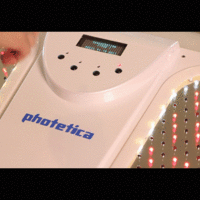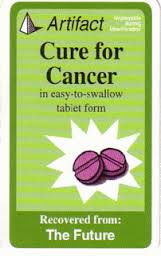The highlights from the world of Breast Cancer and Cancer, as culled from Google Alerts, for the week ending 2 May 2014.
Science-fiction or fact?
This week’s leader comes under the “Too Good to be True” and “Revolutionary” heading. In fact, it was so incredible, I checked the date of the PR statement for the news release in case it was 1 April 2014 and a prank. I did a search on the internet just to play safe.
I sometimes dream of travelling into the future where the cure for cancer has been found, and travelling back with a key device that could get rid of cancer without any side-effects. This week, there’s a device that seems to have fallen out of an alien’s time machine.
Chemotherapy, as we all know, comes at a cost. It not only kills cancer cells, but also all fast-growing cells and damages nerves in the body. It’s a bit like using chemicals to try to burn off your right ear while leaving your left ear intact.
Some of the side-effects of chemotherapy include low blood cell counts, fatigue and chemotherapy-induced peripheral neuropathy (CIPN).
CIPN sympoms include nerve damage, loss of sensation, and even severe pain in the hands, fingers and feet of cancer patients.
The American Cancer Society says that CIPN can even cause more serious problems like changes in your heart rate, blood pressure, dangerous falls, trouble breathing, paralysis and even organ failure. In many cases the pain caused by CIPN is permanent and can cripple the lives of cancer survivors 24 hours a day, 7 days a week. Another study this week shows that many women who have chemotherapy are at higher risk of ending up unemployed 4 years after diagnosis.
The cure, is often more feared, then the disease itself.

Beam me up Scotty? Lazarus: the first device to prevent and reverse chemotherapy-induced peripheral neuropathy.
Now it seems there may be a device that can prevent and reverse the effects of CIPN and some of the other side-effects of chemotherapy. Better still, it does it using low-level laser technology, without chemicals or radiation. The Lazarus device from Photetica sounds like something out of a science-fiction (or Biblical) B-movie, because it looks simple, but promises to deliver. The only hitch? It’s currently not approved by the FDA and is seeking funds for trials through crowdfunding.

